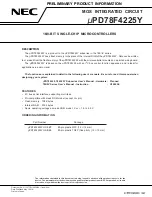
6. If the valve is not opening completely, the adapter
being used with the S-305DC solenoid may be to tight,
the adaptor sleeve could be damaged, or the valve
water passage down stream may be plugged and in
need of cleaning.
7. Solenoid parts list
5.3 Troubleshooting Hydraulic Valves
1. Verify that the valve opens and closes using the manual bleed. If it does
not, the problem is with the valve.
a. Verify that the static mainline pressure at the valve is below 150 PSI
(10.5 bar) and above 10 PSI (.7 bar).
b. Verify that the valve size is correct for the flow rate of the system.
c. The S-305DC solenoid should be installed only on normally closed 2-way
valves.
5.4 Troubleshooting Control Valves
1. Verify that the white common wire is connected to the white common wire
on the controller and that the wire is from the same pair.
2. Verify that common and hot wire splices at the valves or splice boxes are
tight and made with waterproof connectors.
3. 12 and 14 AWG direct burial single strand solid core irrigation wires are
recommended; do not use multi-strand wires.
4. The controller software can detect wire faults or wire shorts.
21
a valve, see that the valve turns on and the sprinklers or drip system is
working. If it does not turn on, the plunger does not retract and extend or
no sound is heard of the plunger latching, repeat the process using a
second solenoid. If the problem continues you may have an issue with the
controller wires and the waterproof connectors.
2. The LEIT-2 controllers will only function with S-305DC solenoid or 305DC-
XXX valve
3. The LEIT-2 controllers will only function with compatible sensors (HUNTER
MINI-CLICK or RAIN BIRD RSD)
5.2 Troubleshooting Solenoids
1. Verify that the correct solenoid and adapters are being used for the valve in
question.
2. Verify that the white and red wires from the solenoid are connected to the
white and red wire pair on the controller and that these splices are tight,
and corrosion free.
3. Verify that no water is leaking externally near the adapter, stem, or bonnet.
4. Verify that all “O” rings and/or rubber hoses are in place, if in doubt, check
the adaptor and the solenoid.
a. To test S-305DC solenoid, remove the solenoid from the valve and
disconnect the hot and common wires. Verify the solenoid functions
properly using a 9-volt battery by briefly touching the wires to the
positive and negative contacts. Reverse polarity if nothing happens.
Plunger should retract. Reverse polarity to close, (plunger should extend
and a sound of the plunger latching should be heard).
b. If the solenoid does not function with a 9-volt battery, check the battery.
If the problem with the solenoid continues after using a second battery,
it should be replaced.
5. If the valve is weeping or not closing completely, the adapter being used
with the S-305DC solenoid may be loose, cross-threaded, missing an “O”
ring, the adaptor sleeve could be damaged, or the valve diaphragm inside
the valve could be in need of cleaning or replacement.
20
Spring
30-906
Plunger Assembly
30-905
Retainer
30-907






























